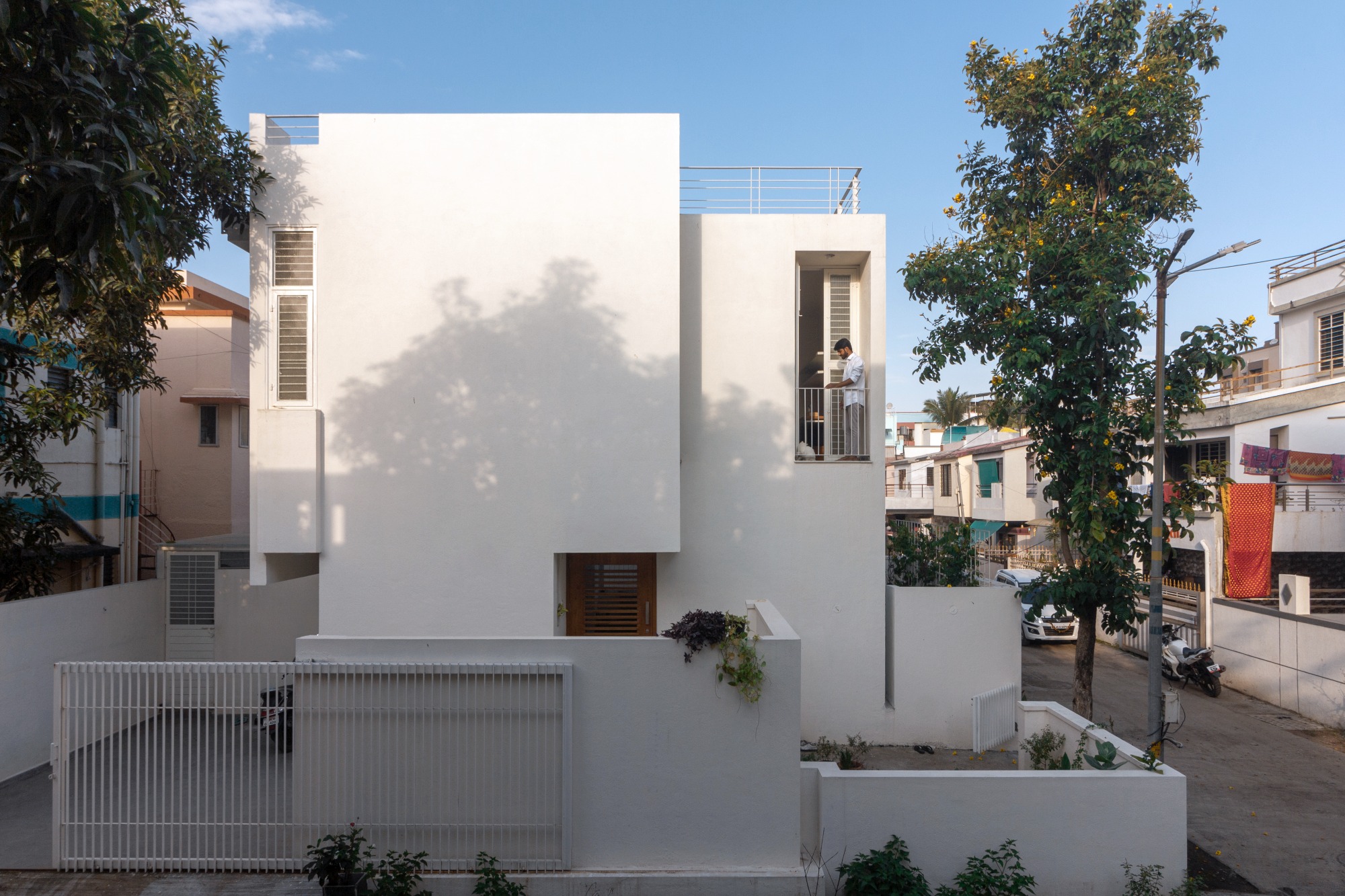Architecture cannot be seen in isolation. Habitable spaces need to be unique to their context, user and unsaid brief, simply as two humans are not similar.
pk.iNCEPTiON
We believe every house should be crafted in response to this, to create originality and retain the unique character shaped by the place, people, and time.
House 20 X 22 is located in Nashik in a low-rise and densely populated locality majorly consisting of row houses, due to the close proximity of houses, these constantly overlook each other. The site sits along the North East corner of a cross junction formed along narrow streets, this corner has a tree and has always been a meeting place, a pause point for the colony.
In response to context and user, the brief derived was to achieve a house with inward-looking private spaces, with the possibility for them to expand outside as and when required.
The project started with us looking for all the freedom inside a restrained margin that the house could offer as a habitable space to the users while still being a secured envelope. Due to the restricted size of the plot, the building took the form of a two-storey house, which appeared as a vertical building with disassociation from the scale of the neighbouring houses.
Thus, came the use of marginal spaces with the compound walls as an enveloping element. This organization of folding compound walls gave shape to multiple usable courts and the scale of built was able to break the verticality of the building. The permissible built expanded towards these envelopes forming larger spaces inside both visually and physically which could be used for different activities as well.
Five envelopes are formed, the first envelope is placed on the NE corner junction and is kept low in scale and it became the pause and the first place of interaction with the house. This space is shaded and surrounded by an existing tree and acts as a public courtyard for the house, a gathering space and also can be used for parking.
It leads you to the second envelope which is planned as the semi-public courtyard. The organization of this cuboid behaves as an extended entrance where the family and the guests can reside. The high walls of this court provide a sense of enclosure and form an informal living area. The house’s entrance is scooped out from this courtyard which orients the user towards the interiors.

The Ground floor consists of a living room, kitchen, dining and utility. The living room is oriented towards the NW corner where it flows into the third envelope formed at the outermost edge. The scale of this envelope creates a visual barrier from the neighbouring house and allows wind and light to flow in smoothly.
All the services are kept in the southwest as this becomes a visual barrier due to the placement of neighbouring houses. The staircase is also planned in this corner which leads to the bedrooms.
On the first floor, the bedrooms connect to the outside by recessed standing balconies. Strategic placement of these vertical niches allows the upper floor to connect with the courts, family spaces and neighbourhood. This gesture of having a vertical opening has come from the wadas of Nashik, where the vertical windows allow for an adequate intake of light and ventilation while maximising privacy indoors.
The formation of the building appears as cubes interlocked while the finishing and ornamentation are kept minimal. The expression of the house is kept as multiple white walls with strategic folds which also expresses the inclusive nature of the Indian families.
The hierarchy of the Public, Semi-public and Private spaces; the idea of Open, Semi-open and Closed spaces, for different occasions, time periods and varying climates, all of these aspects of a house have been conceptualised in a tiny plot of 20×22 ft through interlocking cubes.
Images
Project Facts
Architects: pk_iNCEPTiON
Design Team: Ar. Pooja Khairnar, Ar. Aashlesha Bhosale
Built-up Area: 79 sqm
Year of Completion: 2022
Photographer: Nibedita Mishra



































